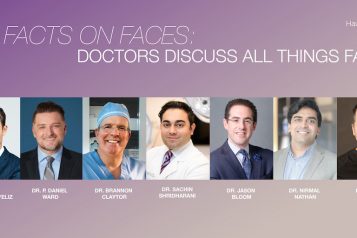
As women, as human beings, we should focus on keeping every part of our body healthy. There are times when the fear of talking about something seeming socially taboo, prevents us from discussing our true needs and concerns with those who can help us achieve the best outcome. I am talking specifically about feminine sexual health and pleasure. Unfortunately, the reality is that various sexual health concerns go unmentioned and unresolved despite their commonness. Such sexual health issues and difficulties, classified medically as Sexual Dysfunction. A compassionate, caring, and skilled physician like Dr. Lara can lead to the resolution of sexual concerns and a greater enhancement of your sexual self-knowledge and, thus, your personal pleasure. As a Women’s Sexual Medicine Expert, Dr. Lara leads women (and men) to enhance and embrace their Sexuality. She views Sexual Health as an integral component of Total Health.
Dr. Adrienne Lara, MD, at Celebrating Women Center in Oxnard, California wants her patients to know that she believes that good patient care is collaborative and involves both the patient and doctor working together towards their shared goal of patient wellness. Dr. Lara takes the time to listen to her patients to better understand who they are, so she’s not treating symptoms, but the whole patient, including their mind, body, and spirit. Dr. Lara's integrity and authenticity when it comes to health care are why she’s so loved by all who see her.
The following discusses common sexual health and pleasure concerns for women and lists potential treatment plans.
Overview
For women, experiencing difficulties achieving orgasm is far too common, and can be due to various physical, emotional, and psychological factors. Only 18.3% of women report reaching climax, and for many of these women, a weak orgasm is an unsatisfactory result. Anorgasmia is the medical term used to describe this difficulty reaching orgasm, and for those who do achieve orgasm, they can vary drastically in intensity and frequency. Anorgasmia, despite ample stimulation of various forms, can leave women feeling hopeless, disappointed, and unfulfilled, as well as can put a strain on romantic relationships between partners.
For those experiencing anorgasmia, if the condition interferes with a relationship and/or causes distress and frustration, it is advised that sufferers see a doctor and seek treatment.
Anorgasmia comes in various forms but the major symptoms are defined as follows: the inability to reach a point of climax at all, weak and unsatisfactory orgasm, and/or long delays in the process of reaching orgasm.
The list below divulges potential anorgasmia subsets:
- Generalized anorgasmia: generalized anorgasmia is characterized by an inability to orgasm in any situation with any sexual partner.
- Situational anorgasmia: for those with situational anorgasmia, orgasm can be reached but only under certain specific conditions and circumstances, and/or only with a certain partner.
- Lifelong anorgasmia: lifelong anorgasmia sufferers have never had an orgasm in their lives.
- Acquired anorgasmia: orgasms can change with age or medication, and for many with acquired anorgasmia, this could be the case. Acquired anorgasmia describes those who used to be able to reach orgasm but now find themselves having great difficulty.
As previously mentioned, anorgasmia (any form) can occur due to many internal and external factors and aspects. Causes can include, but are not limited to, gynecological issues, medication, use of alcohol or other substances, age, illness, poor body image and/or mental health issues, stress, guilt surrounding sex, previous sexual trauma, lack of connection or attraction to a partner, and any other unresolved conflict with one’s partner.
It is important that women who are experiencing anorgasmia seek out a solution if that is what is desired. Potential treatments include sex therapy and couples counseling, clear communication of sexual desires and changes to increase sexual stimulation, treatment of any underlying disease/illness, estrogen therapy for older and postmenopausal women, and finally, local estrogen therapy creams or suppositories that serve to increase blood flow to the genitals thus increasing arousal.
For more information, visit Dr. Lara's Instagram or Facebook!
























